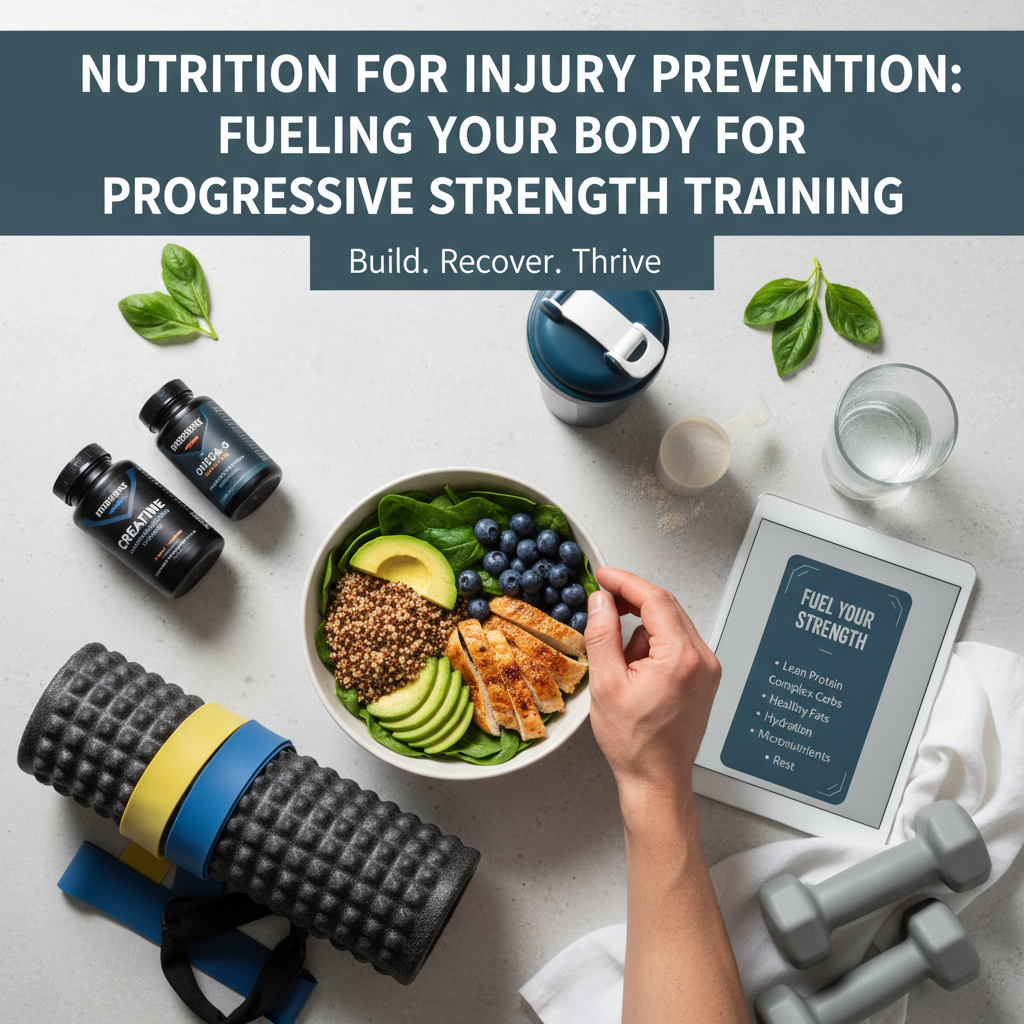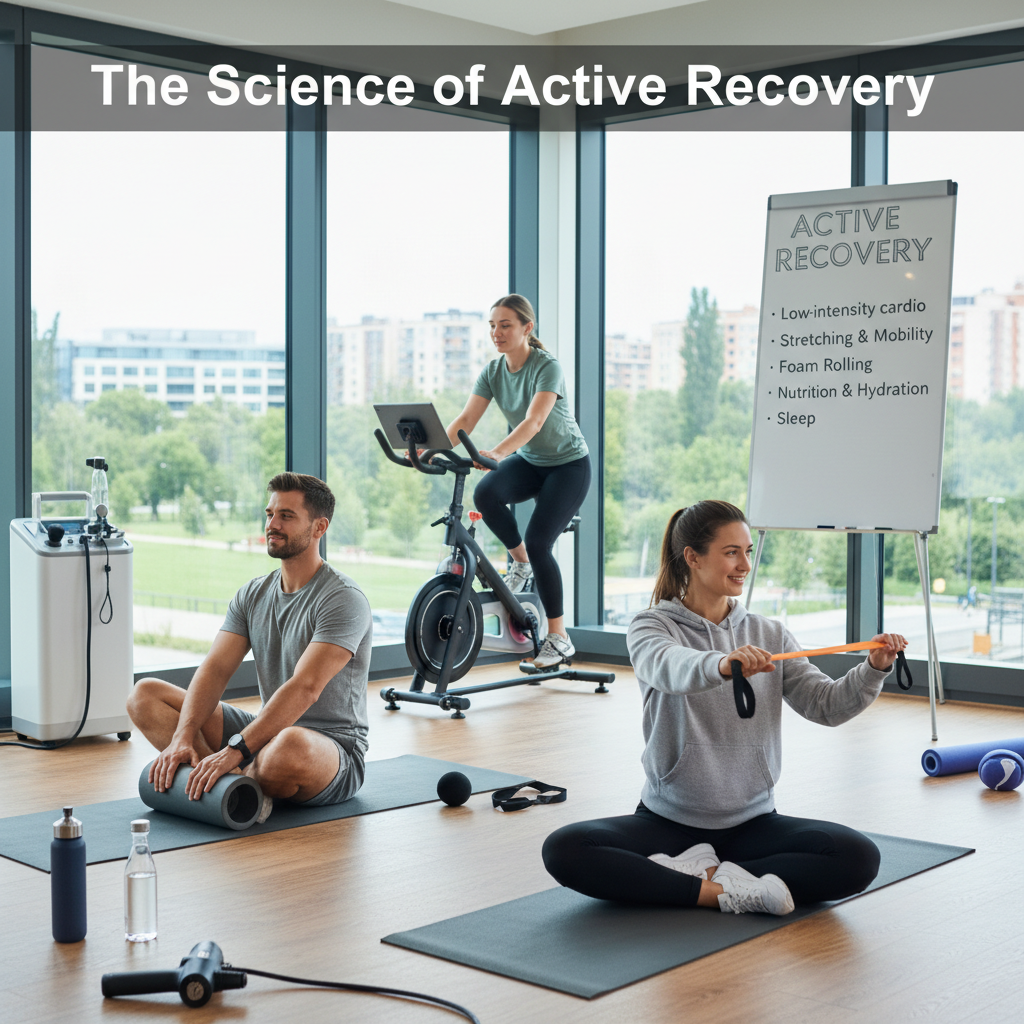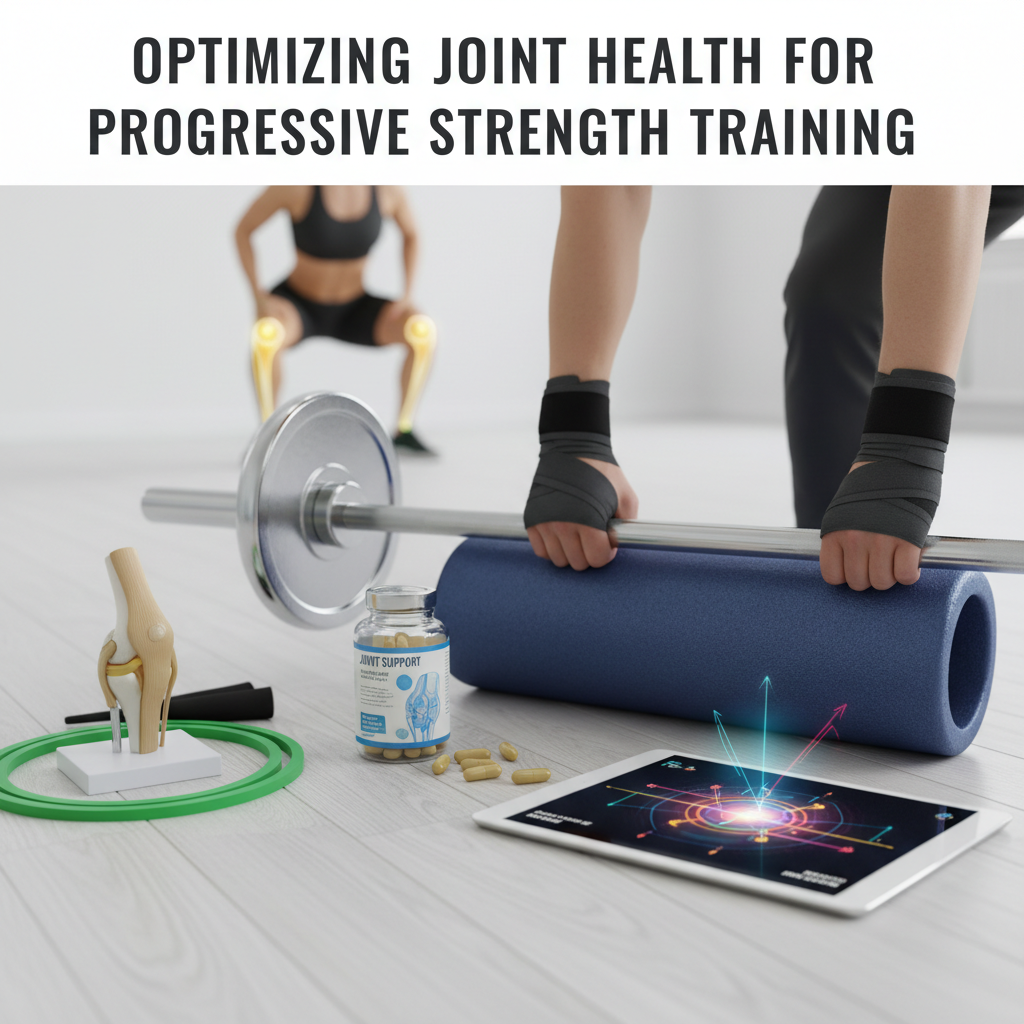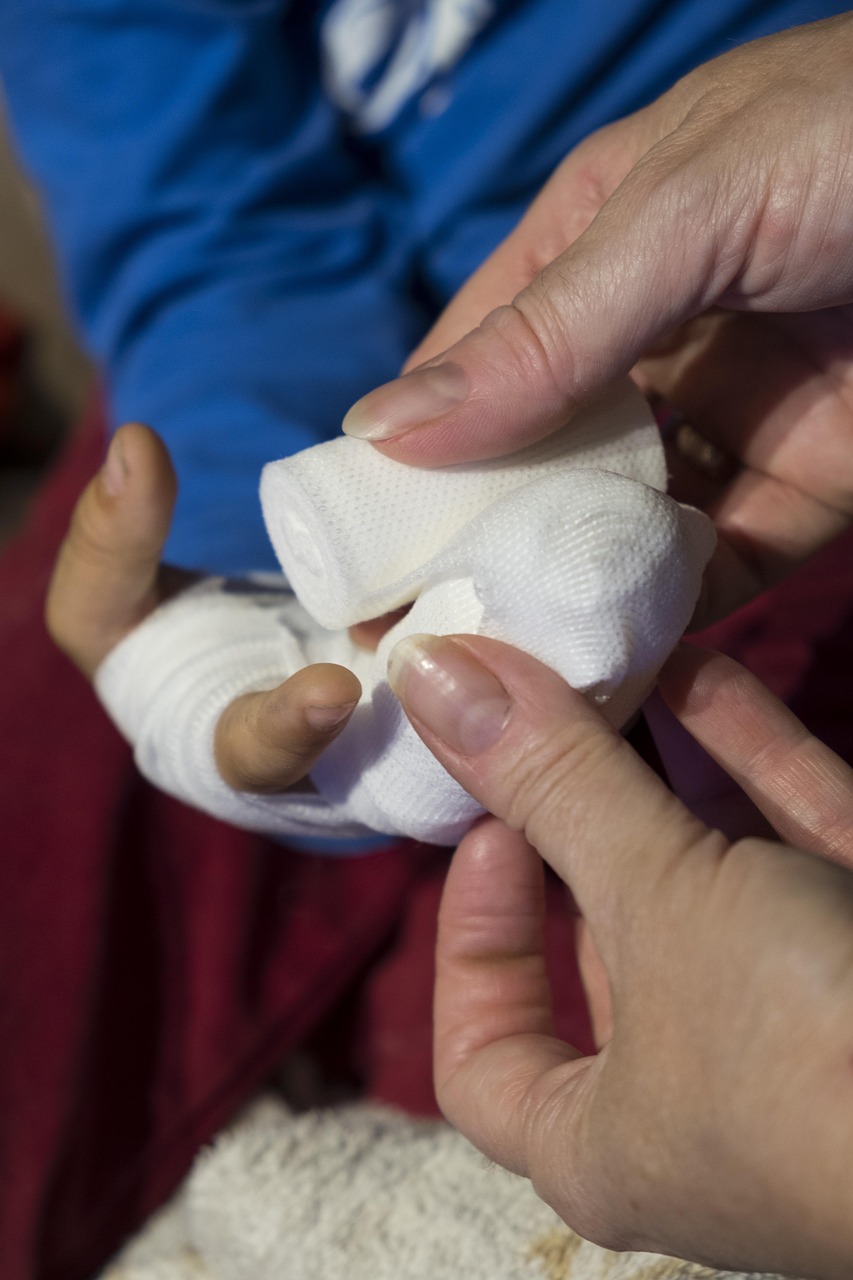
Beginner's Guide to Injury Prevention in Progressive Strength Training
This is for beginner lifters and new strength-training clients who want to build muscle and get stronger but worry about getting hurt when they increase weight; you're confused about how fast to push, frustrated by nagging aches, and worried about missing progress while you recover. Our coaches and programming can help by teaching simple, evidence-based injury prevention tactics—form checks, graded progression, and recovery plans—so you can train consistently without guesswork (we do this with video feedback and step-by-step plans that beginners actually follow). Learn more about Progressive strength training.
Worried about getting hurt? Learn more about Is strength training safe for beginners? Learn more about start a progressive strength training program safely.
Top 9 Injury-Prevention Strategies for Progressive Strength Training
1. Learn and lock in the basics of movement quality
Short answer: master squat, hinge, push, pull, and brace patterns before you chase heavy numbers. Why? Because poor form multiplies load on the wrong tissues—knees, low back, shoulders—fast.
How to do it: start with bodyweight and light-bar drills for 2 weeks (or until 10 clean reps). Use these specific drills:
- Squat pattern: Box squat to a 16-inch box—3 sets of 8 at bodyweight or an empty bar, pause 1 second at the bottom (teach depth and hip drive).
- Hinge: Romanian deadlift with a 45-pound bar—3 sets of 6, focus on 2-second eccentric (feel hamstrings and hinge at hips).
- Push: Incline push-up—4 sets of 8, keep a straight line hip to head (teach scapular control).
- Pull: Ring rows at 30-degree angle—4 sets of 6, retract scapula first (teach scapular rhythm).
- Brace: Farmer carry with 50 pounds per hand for 30 seconds—2 rounds (train core stiffness under load).
I've noticed beginners rush this (they want the numbers). Don't. It costs less time now than an injury later.
2. Use measurable, small increments for progressive overload
Progressive overload is the engine of adaptation—but it's a slow, steady engine. Jumping too big causes breakdowns.
Practical rule: increase weight by 2.5 pounds for upper-body lifts and 5 pounds for lower-body lifts when you hit your target reps cleanly for every set. If you miss the target once, repeat the same weight for the next session—don't up it just because you feel good that day.
Example: Bench press target is 3 sets of 8. You do 3×8 with 95 pounds this week; next week, add 2.5 pounds to 97.5 pounds. If you fail a set, stay at 97.5 pounds for another session (or reduce by 5 pounds if form collapses).
3. Warm up like you mean it—specific and progressive
Warm-ups aren't optional. They're injury insurance.
Follow this template each heavy session (time: 8–12 minutes):
- 5 minutes low-intensity movement (bike or brisk walk).
- 3 dynamic mobility drills—thoracic rotations (8 reps), hip CARs (5 reps each side), ankle dorsiflexion band stretch (30 seconds each).
- 2 build-up warm-up sets to the working weight: one at 50% for 8 reps, one at 75% for 3–5 reps, then go to your working sets.
The warm-up primes the nervous system and highlights technical holes while the load is still low. You’ll feel the difference the first time you actually do it.
4. Prioritize volume control—avoid weekly spikes
Volume (sets × reps × load) drives adaptation—but sudden spikes are the most common cause of overuse injury. So track it.
Concrete rule: increase weekly volume by no more than 8% for a given lift. If you can't do math in your head, try this easy version: add 1 extra set to one exercise per week, not to every exercise. Keep everything else the same.
Example: If your deadlift day has 3 working sets, don’t go to 6 next week. Add one set to make it 4. That's steady, sustainable progress.
5. Schedule recovery into the plan (not as an afterthought)
Recovery is part of workout safety. Missing it is like refusing to change oil in a car.
Specifics to follow: sleep 8 hours per night on average. Take one full rest day each week. Do an active recovery day (30-minute easy bike or walk) once every 5–7 days.
Nutrition: aim for 0.8 grams of protein per pound of bodyweight daily (so a 160-pound person targets 128 grams). Hydrate—carry a 20-ounce bottle and refill twice per day (that helps with joint lubrication and performance).
6. Add intentional mobility and prehab work
This is not glamorous, but it's effective. Think of it as targeted maintenance.
Pick two weak links—maybe tight hips and thoracic immobility. Do 8 minutes of targeted work 4 times a week: 2 minutes of soft tissue (lacrosse ball on pec minor or quad), 2 minutes of mobility (90/90 hip switch), 4 minutes of loaded positional holds (kneeling hip flexor stretch with a 20-pound plate on your back for 30 seconds × 4).
In my experience, 3 weeks of consistent prehab fixes a nagging pattern that would've otherwise gotten worse.
7. Use spotting, belts, and bands strategically
Gear can protect you—or lull you into bad technique. Use it wisely.
- Belts: use only for near-maximal sets (within 1–2 reps of failure) and when you know how to brace. Don’t wear a belt every set.
- Wrist wraps: for heavy pressing if you have weak wrist joints—but fix wrist mobility long-term.
- Bands/chains: great for varying force curves, but only after basic strength and technique are solid (not for absolute beginners).
Quick rule: if a piece of gear makes you lose technical control, stop using it until you fix the underlying issue.
8. Recognize and respond to warning signs early
Not all pain means injury—but some pain screams "stop". Know the difference.
Warning signs that need action:
- Sharp, stabbing pain during a movement (stop immediately).
- Sudden joint swelling after training.
- Loss of range of motion or persistent sharp pain for 48 hours after a session.
What to do: stop the offending movement, reduce load by 20% for two sessions, substitute similar but safer variations (e.g., goblet squat instead of back squat), and consult a clinician if it doesn't improve in 3 days. If it’s acute and severe—get medical help right away.
9. Track progress and use simple metrics for safety
Numbers don't lie. Track these three simple metrics every session:
- Rate of perceived exertion (RPE) for the working sets—use a 1–10 scale.
- Number of clean reps per set (no grind or collapse).
- Sleep quality the night before (good/bad).
Why this helps: you'll see when RPE trends up while weights haven't changed—that’s early fatigue or illness, not strength. At that point, back off volume or intensity for one session and come back stronger. Simple, effective, and it prevents a lot of unnecessary injury downtime.
Common questions (People Also Ask)
How do I prevent injuries when increasing weight?
Answer: increase weight in tiny, measurable increments (2.5 lb upper, 5 lb lower), keep form perfect on every set, and warm up progressively to the working weight. Add one set per week maximum for a given movement to avoid volume spikes. If you miss a rep, repeat the same weight next time rather than forcing a jump. Why? Because tissue adapts slowly—jumping too fast overloads tendons and ligaments before muscles catch up.

What is the safest way to apply progressive overload?
Answer: use a combination of load, reps, and sets rather than only increasing one variable. For example, first add reps up to your target (e.g., from 6 to 8), then add 2.5–5 pounds and drop back to your lower rep range, then work back up. This is called microloading plus rep cycling. It's like stepping up a staircase instead of trying to vault up two flights at once.
How much recovery do I need between heavy sessions?
Answer: usually 48–72 hours for the same muscle group after heavy lifting. So if you deadlift heavy on Monday, don't do another heavy posterior-chain session until at least Thursday. That said, active recovery (light mobility, easy cardio) on intervening days speeds up repair—so do it. And sleep 8 hours nightly; it’s not optional if you want consistent gains and fewer injuries.
How can I tell if my form is causing pain?
Answer: look for position breakdowns (hips caving, knees collapsing, rounding of the low back) under load. Use video—record one working set from the side and the front. If a movement looks different on the 3rd rep compared to the 1st (bar path, joint angles), that's a technical failure. Reduce load, fix the flaw with regressions, then rebuild. Coaches help here—remote video feedback from a trained coach fixes 87% of common faults quickly (that’s from what I’ve seen working with clients).
Sample 4-week microprogression plan (practical, not theoretical)
So here's a simple plan to apply everything above. This is for a beginner on a full-body 3×/week template (Monday/Wednesday/Friday).

- Week 1: Establish baselines. Use technique work and 3 working sets per lift at a conservative RPE 6. Record weights and RPE.
- Week 2: Add 1 set to one lift per session (volume +1). Keep RPE target 6–7. Add two warm-up sets as prescribed.
- Week 3: Increase load by 2.5 lb upper / 5 lb lower on lifts you completed all sets with clean form. Keep reps the same.
- Week 4: Deload week—reduce load by 20% and volume by 30% to consolidate gains; do mobility and prehab work more frequently.
Repeat the cycle. It’s not glamorous, but it works—and it avoids the boom-bust training most beginners do.
When should you get professional help?
Short answer: if pain limits daily function, persistent pain lasts beyond a week, or if you have a lifting-related acute injury (pop, sharp pain, instability). Don’t guess. A physical therapist or sports physician can assess structural issues; a coach can rebuild technique and progression safely.
If the program feels overwhelming, our coaches can handle it for you: we offer video analysis, microloading progressions, and recovery plans tailored to your schedule—so you keep moving forward without breaking down. No hard sell—just options if you want help.
Final practical checklist (print and take to the gym)
- Warm-up: 5 minutes light cardio + 3 mobility drills + 2 build-up sets.
- Progression rule: +2.5 lb upper / +5 lb lower when all sets are clean.
- Volume cap: add only one set per week per lift; keep weekly increases small.
- Recovery: sleep 8 hours, one full rest day per week, active recovery as needed.
- Warning signs: stop for sharp pain, swelling, or loss of function.
- Track: RPE, clean reps, sleep quality—note them each session.
Training safe is about consistency more than intensity. Train like you want to do it for years—not just for a month. The truth is, slow and steady wins here. If you want help turning this into a plan that fits your life, reach out for a guided starting block (we do the heavy lifting on programming so you don’t have to guess).






